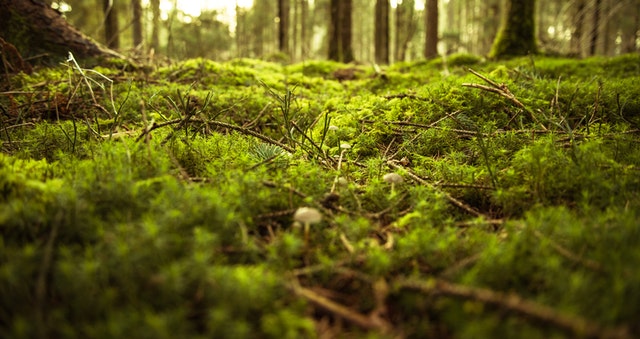Today’s Activities
Engage
Explore how too much food and too few food options are both important issues that need our attention. You will also examine three (perhaps surprising) examples of food items that are often thrown away but are in many cases usable and edible, like misshapen produce, foods with ‘expired’ sell-by dates, and leftover or surplus food.
Watch What is the Environmental Impact of Feeding the World?
Explore
- Look at what the world eats.
- Compare and contrast America to 4 other countries.
- Click on types of foods in the chart for comparison.
Food Waste: look at old or Misshapen fruits/vegetables in your home, do you have any ½ filled old leftovers in empty take-out containers, look inside your refrigerator and pantry for packaged food items with ‘expired’ sell-by dates
Think about the fact that Up to 40 percent of the food in the United States is never eaten. But at the same time, one in eight Americans struggles to put enough food on the table.
Check out this article: Drive Federal Action to Reduce Food Waste
- Why do you think people don’t like to eat produce that isn’t perfectly shaped? How could you inspire or encourage people to embrace misshapen fruits and vegetables?
- What do you think the ‘sell-by’ date on a food package actually means if it isn’t the date the food is no longer edible? Why do the producers put this date on there?
Read
- Food to the Rescue: Bon Appétit’s Imperfectly Delicious Produce
- The Dating Game: How Confusing Food Date Labels Lead to Food Waste in America
- 76% 70% 58%
Write a paragraph on your opinion about what Bon Appétit is doing in America and France.
Explain
Read
Use the information from what you have read and watched so far to answer these questions:
- Why might feeding the global population be different now than it was 50 years ago?
- How is food production related to environmental change and habitat loss?
- What is the difference between the amount of land needed to feed the average American, versus the diet of people living in other countries?
- Why does meat production require more land than producing vegetables, fruits, or grains?
- Global welfare is rising, which is good news! What does this mean for agriculture and the environment?
- How would you define a “food desert”?
- Who is likely to develop solutions to global food issues? Why do you think so?
Why might feeding the global population be different now than it was 50 years ago?
- How is food production related to environmental change and habitat loss?
- What is the difference between the amount of land needed to feed the average American, versus the diet of people living in other countries?
- Why does meat production require more land than producing vegetables, fruits, or grains?
- Global welfare is rising, which is good news! What does this mean for agriculture and the environment?
- How would you define a “food desert”?
Elaborate
Plan the menu for a dinner party!
Imagine you are planning a party and that you are responsible for purchasing the food for the party. Doing this, however, won’t necessarily be as simple as going to the grocery store and buying a bag of potato chips and a cake. There will be certain conditions that must be met:
- Everyone in your household must like the food AND be able to eat all of the food.
- No food can go to waste.
- The food has to come from within a 5-mile radius of your home. (Note: Depending on the location of your home, you might need to expand this radius. Try to make sure there is access to at least one convenience store or market.)
- There is a limited budget for the food.
- What steps should be taken to design a plan for the party food that meets all of these conditions?
- An important first step in design thinking is to better understand the people who will be impacted by your design plan, as well as the constraints or restrictions you must design within. How do we gain this better understanding? By asking questions!
Take 5 minutes to write down questions you might ask your housemates : Examples:
- (To a housemate) Do you have any food allergies?
- Are you Gluten-Free?
- Are you on any special diet?
- How much money can I spend
Write your menu on what you would buy and/ or make.
Look up how much the items would cost on a grocery store’s website.
Design an invitation to your party listing all the foods that you will be serving.
Extend
Play: A Free, Web-based, Environmental Simulation Game
While playing Cornucopia—a fast-paced farm simulator—you manage a plot of land, planting crops based on a number of factors, in order to meet a variety of food orders. Keep an eye on your water meter and your crop yields, and earn technology upgrades to make your farm as successful as possible before the season ends. Play for free!
https://www.calacademy.org/cornucopia
Get creative: Design a poster on 5 ways people can reduce food waste in your community.
Did you do today’s activities?
Push the button below to let us know you’ve completed the activities below:
Teaching Tips
Accessibility Feature
Turning on transcripts for YouTube Videos [PDF]
Additional lessons are available for this grade level by pressing “More Lessons” above, or selecting a lesson below:

What are your Hopes and Dreams?
Today's ActivitiesThe end of the school year is a great time to think about goals. What do you want to accomplish? What do you want to get better at and feel proud of? Watch this video. Kid President has a dream to share with you! What is Kid President telling us...

Fail Forward
Today's Activities Reflect on this image. Talk to another person and share thoughts with each other. What this video about Why Will Smith Wants You to Fail Before You Succeed. Do you agree or disagree with Will Smith? Explain what experience(s) in your life led you to...

Meet our friends, mold and moss
Today's ActivitiesToday, we’re going to learn to appreciate a pair of organisms that we often just step right over… or immediately pitch into the garbage. One is green, understated, wise: the Yoda of plants. The other is fuzzy and a little funny-smelling. The fungi...
